ВУЗ: Казахская Национальная Академия Искусств им. Т. Жургенова
Категория: Учебное пособие
Дисциплина: Не указана
Добавлен: 03.02.2019
Просмотров: 17412
Скачиваний: 18
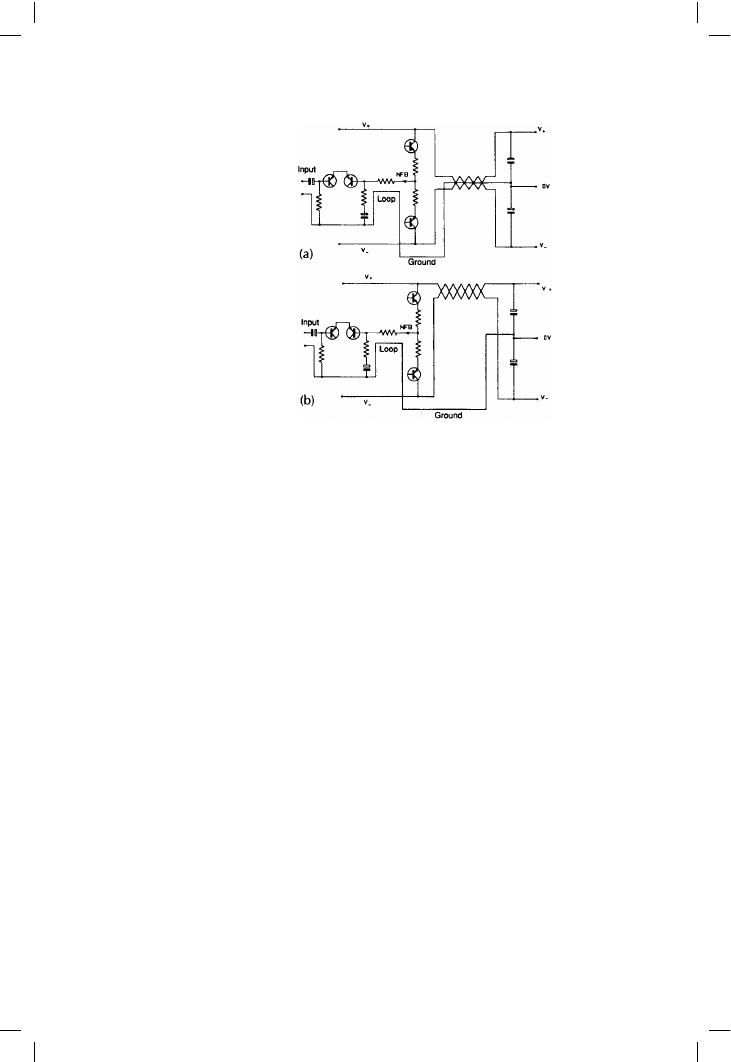
Audio Power Amplifier Design Handbook
clear, but seem to involve the difficulty of ensuring exactly equal coupling
between three twisted conductors. In Figure 6.9, the supply rails are twisted
together but kept well away from the ground return; this will allow field
generation, but if the currents in the two rails butt together to make a nice
sinewave at the output, then they should do the same when the magnetic
fields from each rail sum. There is an obvious risk of interchannel crosstalk
if this approach is used in a stereo amplifier, but it does deal effectively with
the induced-distortion problem in some layouts.
Distortion number 7: NFB takeoff point distortion
It has become a tired old truism that negative feedback is a powerful
technique, and like all such, must be used with care if you are to avoid
tweeter-frying HF instability.
However, there is another and much more subtle trap in applying global
NFB. Class-B output stages are a maelstrom of high-amplitude halfwave-
rectified currents, and if the feedback takeoff point is in slightly the wrong
place, these currents contaminate the feedback signal, making it an
inaccurate representation of the output voltage, and hence introducing
distortion; Figure 6.10 shows the problem. At the current levels in question,
all wires and PCB tracks must be treated as resistances, and it follows that
point C is not at the same potential as point D whenever TR1 conducts. If
feedback is taken from D, then a clean signal will be established here, but
the signal at output point C will have a half-wave rectified sinewave added
to it, due to the resistance C–D. The actual output will be distorted but the
feedback loop will do nothing about it as it does not know about the error.
170
Figure 6.9
Distortion 6;
Countermeasures
against the induction of
distortion from the
supply rails. 6.7b is
usually more effective
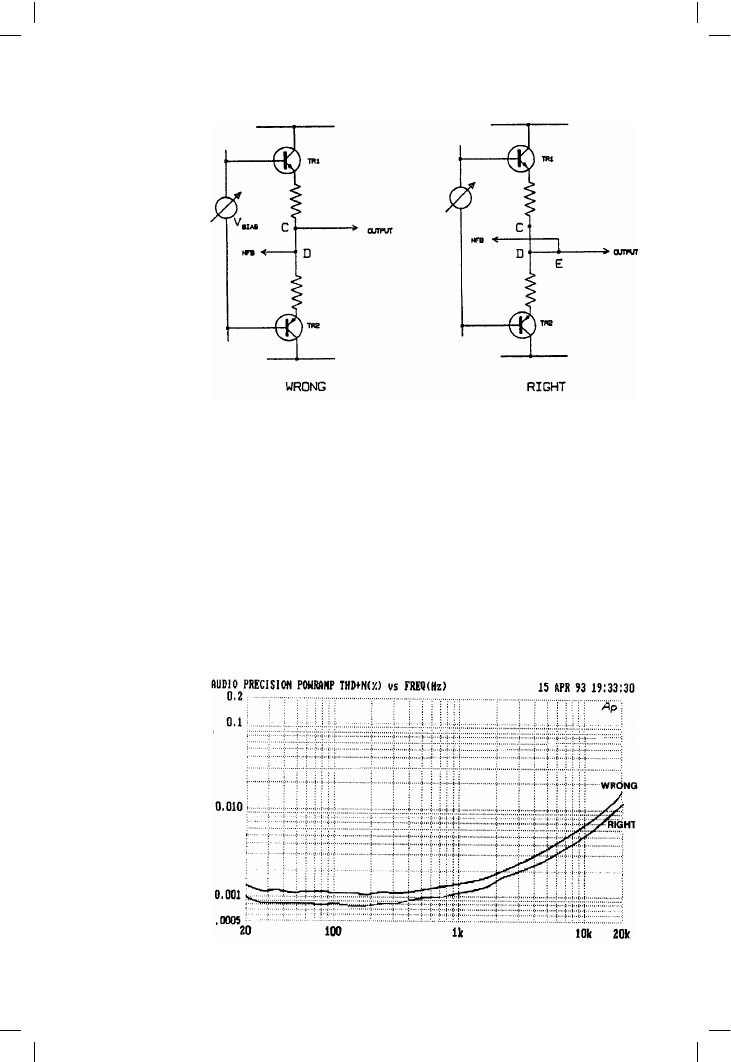
The output stage II
Figure 6.11 shows the practical result for an amplifier driving 100 W into
8 !, with the extra distortion interestingly shadowing the original curve as
it rises with frequency. The resistive path C–D that did the damage was a
mere 6 mm length of heavy-gauge wirewound resistor lead.
Figure 6.12 shows a THD residual for Distortion 7, introduced by
deliberately taking the NFB from the wrong point. The THD rose from
0.00097% to 0.0027%, simply because the NFB feed was taken from the
wrong end of the leg of one of the output emitter resistors Re. Note this is
not the wrong side of the resistor, or the distortion would have been gross,
but a mere 10 mm along a very thick resistor leg from the actual output
junction point.
171
Figure 6.10
Distortion 7; Wrong
and Right ways of
arranging the critical
negative-feedback
takeoff point
Figure 6.11
Distortion 7 at work;
the upper (WRONG)
trace shows the result
of a mere 6 mm of
heavy-gauge wire
between the output
and the feedback
point
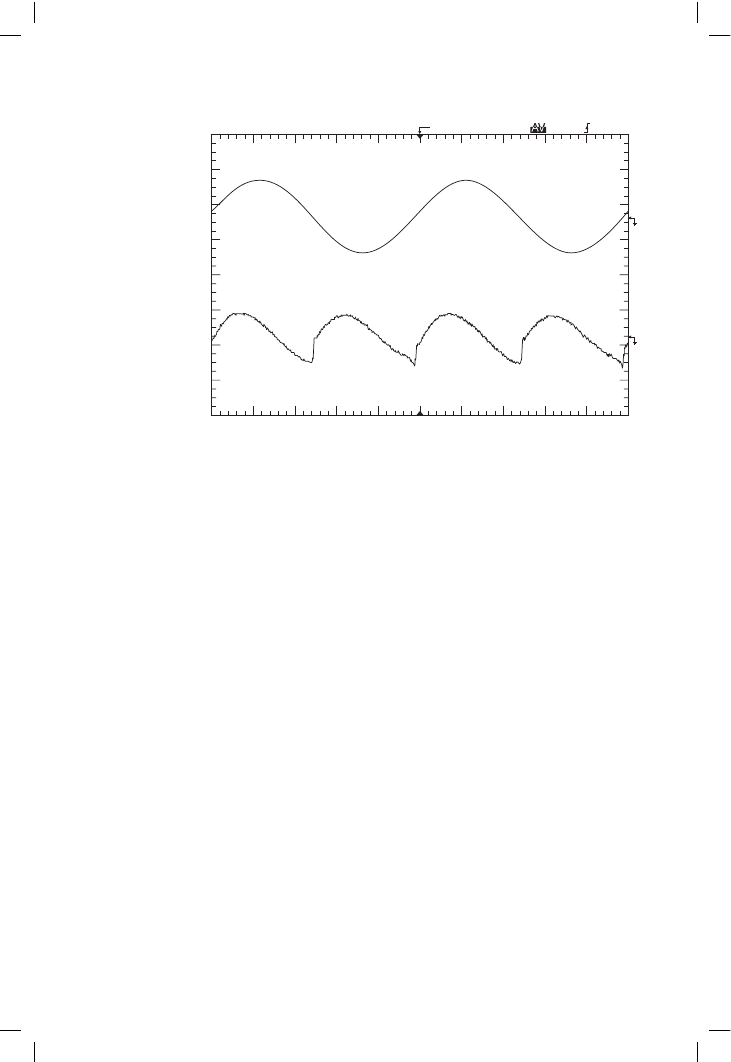
1
2
20.0V
50.0
0.00s
200
1 RUN
/
m
v
!
s
1
2
Audio Power Amplifier Design Handbook
Of the distortions that afflict generic Class-B power amplifiers, 5, 6 and 7
all look rather similar when they appear in the THD residual, which is
perhaps not surprising since all result from adding half-wave disturbances
to the signal.
To eliminate this distortion is easy, once you are alert to the danger. Taking
the NFB feed from D is not advisable as D is not a mathematical point, but
has a physical extent, inside which the current distribution is unknown.
Point E on the output line is much better, as the half-wave currents do not
flow through this arm of the circuit.
Distortion number 8: capacitor distortion
When I wrote the original series on amplifier distortion
[4]
, I listed seven
types of distortion that defined an amplifier’s linearity. The number has
grown to eight, with the addition of electrolytic capacitor distortion. This
has nothing to do with Subjectivist hypotheses about mysterious non-
measurable effects; this phenomenon is all too real, though for some reason
it seems to be almost unknown amongst audio designers.
Standard aluminium electrolytics generate distortion whenever they are
used so a significant AC voltage develops across them; this is usually when
they are used for coupling and DC blocking, whilst driving a significant
resistive load. Figure 6.13 is the test circuit; Figure 6.14 shows the resulting
distortion for a 47 µF 25 V capacitor driving +20 dBm (7.75 Vrms) into a
680 ! load, while Figure 6.15 shows how the associated LF roll-off has
barely begun. The distortion is a mixture of second and third harmonic, and
rises rapidly as frequency falls, at something between 12 and 18 dB/octave.
172
Figure 6.12
Distortion 7, caused
by choosing an NFB
takeoff point inside
the Class-B output
stage rather than on
the output line itself.
THD is increased
from 0.00097% to
0.0027%, by taking
the NFB from the
wrong end of 10 mm
of very thick resistor
leg. Averaged 64
times
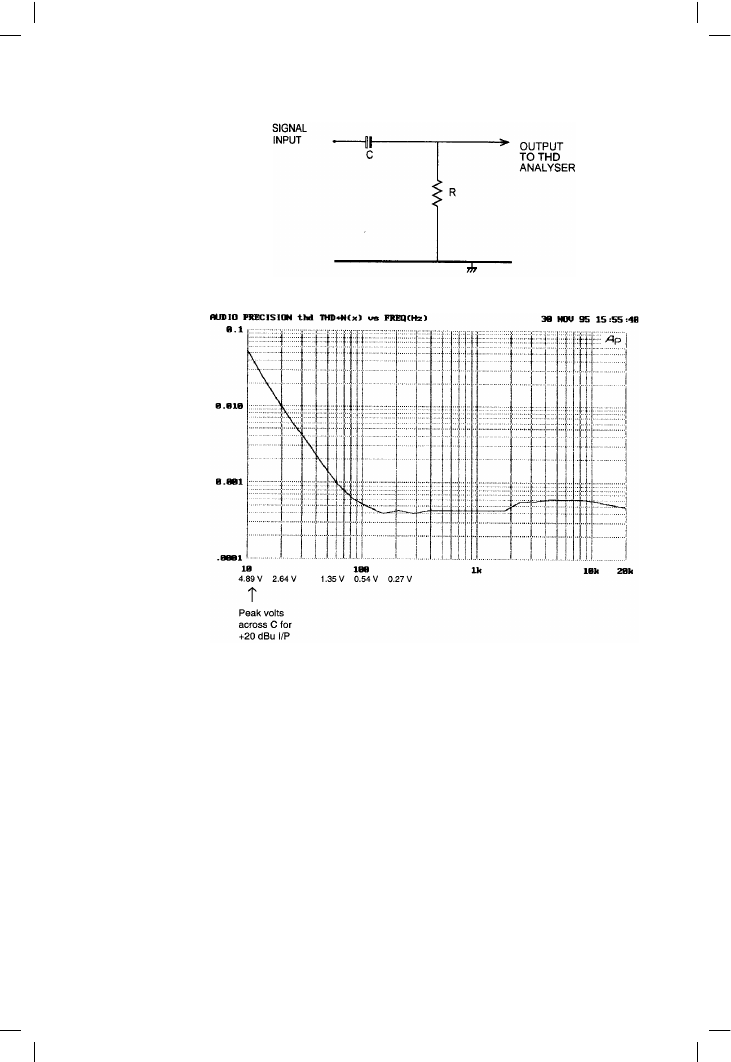
The output stage II
The great danger of this mechanism is that serious distortion begins while
the response roll-off is barely detectable; here the THD reaches 0.01%
when the response has only fallen by 0.2 dB. The voltage across the
capacitor is 2.6 V peak, and this voltage is a better warning of danger than
the degree of roll-off.
Further tests showed that the distortion roughly triples as the applied
voltage doubles; this factor seems to vary somewhat between different
capacitor rated voltages.
The mechanism by which capacitors generate this distortion is unclear.
Dielectric absorption appears to be ruled out as this is invariably (and
therefore presumably successfully) modelled by adding linear components,
in the shape of resistors and capacitors, to the basic capacitor model.
Reverse biasing is not the problem, for capacitors DC biased by up to +15 V
show slightly increased, not reduced distortion. Non-polarised electrolytics
173
Figure 6.13
A very simple circuit to
demonstrate electrolytic
capacitor distortion.
Measurable distortion
begins at 100 Hz
Figure 6.14
Capacitor distortion vs
frequency, showing the
rapid rise in THD once
the distortion threshold
is reached
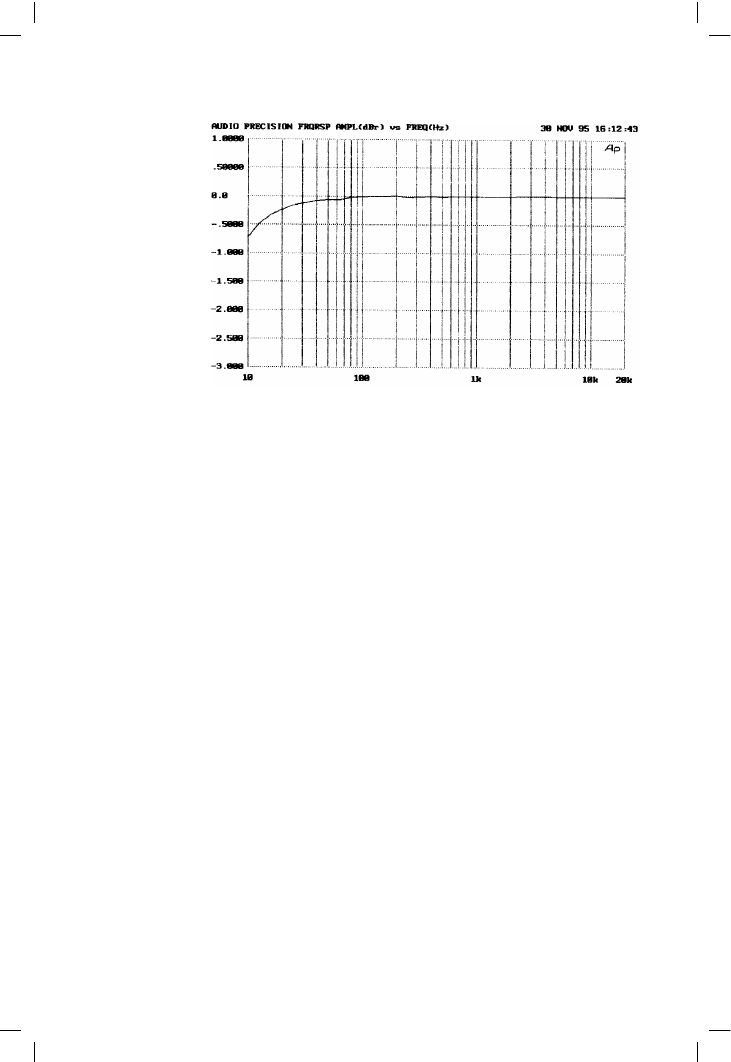
Audio Power Amplifier Design Handbook
show the same effect but at a much greater AC voltage, typically giving the
same distortion at one-tenth the frequency of a conventional capacitor with
the same time-constant; the cost and size of these components generally
rules out their use to combat this effect. Usually the best solution is simply
to keep increasing the capacitor value until the LF distortion rise disappears
off the left of the THD graph. Negligible roll-off in the audio band is not a
sufficient criterion.
Electrolytics are therefore best reserved for DC filtering, and for signal
coupling where the AC voltage across them will be negligible. If a coupling
capacitor does have AC voltage across it, and drives the usual resistive
load, then it must be acting as a high-pass filter. This is never good design
practice, because electrolytics have large tolerances and make inaccurate
filters; it is now clear they generate distortion as well.
It is therefore most undesirable to define the lower bandwidth limit simply
by relying on the high-pass action of electrolytics and circuit resistances; it
should be done with a non-electrolytic capacitor, made as large as is
economical in order to reduce the value of the associated resistance and so
keep down circuit impedances, thus minimising the danger of noise and
crosstalk.
Capacitor distortion in power amplifiers is most likely to occur in the
feedback network blocking capacitor (assuming a DC-coupled amplifier).
The input blocking capacitor usually feeds a high impedance, but the
feedback arm must have the lowest possible resistances to minimise both
noise and DC offset. The feedback capacitor therefore tends to be relatively
large, and if it is not quite large enough the THD plot of the amplifier will
show the characteristic kick up at the LF end. An example of this is dealt
with in detail on page 88.
174
Figure 6.15
The small amount of
LF roll-off associated
with the distortion rise
in Figure 6.11